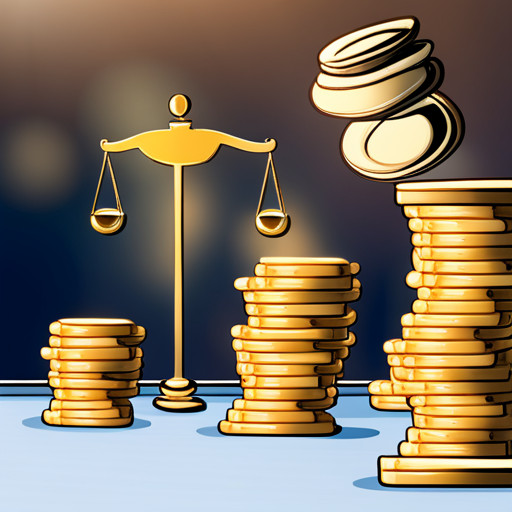Types of Personal Injury Damages Everything You Can Claim for Compensation
What constitutes a fair compensation for personal injury?

This article provides a comprehensive review of the types of damages claimable in personal injury cases. It elucidates the differentiation between special and general damages, explores the implications of wrongful death, scrutinizes the role of punitive damages, and examines overlooked areas such as consortium loss, reputational damage, and property value reduction.
The aim is to offer a detailed and legally accurate guide to understanding personal injury compensation.
Key Takeaways
- Special damages include economic losses such as medical expenses, lost income, and property damage.
- General damages encompass non-economic losses like pain and suffering, emotional distress, and loss of enjoyment.
- Family damages are claimed in cases of wrongful death.
- Punitive damages can be awarded to punish the defendant and deter similar behavior.
Understanding Personal Injury Damages

In the realm of personal injury damages, a variety of compensations can be claimed. These compensations include special damages like economic losses, general damages such as pain and suffering, family damages for wrongful death, as well as punitive damages in court verdicts and other types of damages.
Understanding compensatory damages is crucial as it encompasses both economic and non-economic losses. Economic losses are quantifiable and typically easier to assess. They range from medical expenses to lost income.
On the other hand, non-economic damages are subjective and more challenging to quantify. Assessing non-economic damages involves evaluating the impact of pain, suffering, emotional distress, and loss of enjoyment.
It is imperative to fully comprehend the intricacies of these damages for a comprehensive claim. This knowledge aids in ensuring rightful recompense and promoting justice in personal injury cases.
Special Damages: Examining Economic Losses

Special damages, also known as economic losses, encompass a variety of costs such as those associated with medical diagnosis and treatment, mental health services, lost income or earning capacity, out-of-pocket expenses, and vehicle and personal property damage. These damages are quantifiable financial burdens that the injured party has incurred due to the injury.
- *Examining Medical Costs*: This includes the expenses for immediate treatment, ongoing care, rehabilitation, and any future medical costs.
- *Mental Health Services*: Costs for psychological counseling and therapy are considered.
- *Lost Income or Earning Capacity*: This loss is calculated based on the income the injured would have earned.
- *Analyzing Out-of-Pocket Expenses*: Any expenses the victim paid from their own pocket due to the injury.
- *Vehicle and Personal Property Damage*: The cost to repair or replace damaged property.
General Damages: Assessing Pain & Suffering

General damages, encompassing aspects such as pain and suffering, emotional distress, loss of enjoyment, loss of consortium, and disfigurement, represent the non-economic impacts that an injured party experiences following an incident.
The process of assessing pain and suffering is complex, involving both physical and psychological factors. It requires a comprehensive evaluation of the injured party's condition, the severity and duration of pain, as well as the impact on quality of life.
Further complexities arise when considering loss of consortium, with its hidden emotional consequences. This refers to the deprivation of the benefits of a family relationship due to injuries, including companionship, affection, comfort, and sexual relations. It highlights the profound personal impact of injury, beyond mere economic losses.
Damages for Wrongful Death: A Family’s Perspective

Assessing the financial and emotional toll of wrongful death necessitates a thorough understanding of the various areas of loss experienced by the bereaved family. It involves a comprehensive evaluation of both tangible and intangible losses.
Tangible losses, such as funeral expenses and financial support loss, are easily quantifiable. However, the intangible suffering, though less quantifiable, can be equally devastating.
- Funeral and burial expenses: Immediate costs associated with the death
- Loss of financial support: Future income the deceased would have provided
Loss of companionship: Emotional distress from losing a loved one
- Loss of guidance and support: The missing parental or spousal influence
- Loss of services: Tasks the deceased performed in the home
These losses highlight the extensive and multifaceted damage wrongful death inflicts on bereaved families.
The Role of Punitive Damages in Court Verdicts

Punitive damages in court verdicts serve a distinct role, as they are intended not merely to compensate the plaintiff, but also to punish the defendant and deter similar behavior in the future. The factors considered in awarding punitive damages often include the severity of the defendant's conduct, the potential harm inflicted, the defendant's intent, and the economic status of both parties.
Legislatures and courts have imposed caps on punitive damages to prevent excessive awards that could financially devastate defendants. These caps are subject to scrutiny, as they should balance the need for punishment and deterrence with fairness to the defendant.
Therefore, punitive damages are an essential element of the judicial system, promoting accountability and discouraging wrongful conduct.
Other Potential Damages in Personal Injury Claims

Other potential losses in legal disputes involving harm to an individual may include future earnings, anticipated medical expenses, companionship, reputation, and property value. These are often considered as non-economic damages, evaluating intangible losses which are hard to quantify but significant in compensating for the harm suffered.
- Future Earnings: Loss of potential income due to injury or disability.
- Anticipated Medical Expenses: Future healthcare costs including rehabilitation.
- Companionship: Loss of consortium or companionship from the injured party.
- Reputation: Damage caused to personal or professional reputation.
- Property Value: Depreciation of property value due to the incident.
Understanding the cost implications of legal fees is crucial as pursuing these claims can be expensive. Thus, comprehending these potential damages can provide a comprehensive perspective on the compensation process.
The Impact of Lost Future Earnings

The impact of lost future earnings can significantly influence the financial stability of an individual who has been rendered incapable of working due to an incident causing harm. This loss not only affects their immediate financial situation but also has a profound impact on retirement plans.
In determining compensation for such individuals, the process of calculating lost earning capacity becomes an essential component. This process encompasses a detailed analysis of the individual's age, occupation, skill set, and life expectancy. Furthermore, the probable promotions, raises, and additional benefits that could have been acquired are also considered.
Hence, the adequate calculation of lost earning capacity ensures that the potential loss in future earnings and its impact on retirement plans are adequately compensated.
Future Medical Expenses: A Significant Consideration

Future medical expenses constitute a significant consideration in legal proceedings, as they encompass potential costs for ongoing treatment, therapy, or medication required due to an incident causing harm. When calculating future medical costs, various factors come into play:
- Nature and severity of the injury: More severe injuries typically require extensive, long-term treatment.
- Age and general health of the victim: Younger, healthier individuals may recover quicker, potentially reducing future costs.
- Cost of medical equipment or home modifications: If an injury results in disability, additional expenses may be required.
- Projected inflation of healthcare costs: As medical costs rise over time, future expenses may be significantly higher.
- Likelihood of complications or further treatment: Certain injuries may carry a higher risk of complications, potentially necessitating further treatment.
Consortium Loss: A Hidden Consequence

Consortium loss, a less visible yet profound consequence of personal harm, refers to the deprivation of the benefits of a familial relationship due to injuries suffered by a loved one. Understanding the impact of such loss involves acknowledging the hidden consequences, often evidenced in the deterioration of companionship, affection, and other emotional support previously enjoyed.
The law recognizes this form of suffering, allowing family members to claim compensation under the umbrella of personal injury damages. The persuasive argument for this provision lies in the fact that injuries extend beyond the physical realm, disrupting the emotional and relational balance in a family.
Hence, it is legally accurate and ethically necessary to consider consortium loss in compensation claims.
Reputational Damages: Overlooked But Important

Transitioning from the often neglected aspect of consortium loss, the focus now shifts to another overlooked but essential aspect of personal injury damages - reputational damages. These damages are significant as they have a far-reaching impact on career opportunities and personal life.
Reputational damages arise when a person's good name and standing in society are compromised due to the wrongful actions of another. This can occur in numerous scenarios, such as defamation, false accusations, or even privacy invasion.
The potential repercussions include:
- Loss of job opportunities
- Decrease in business prospects
- Alienation from professional or social circles
- Psychological distress
- Financial burden due to litigation costs
The pursuit of these damages requires a detailed understanding of the legal nuances, thus accentuating the need for competent legal assistance.
Property Value Reduction as a Result of Personal Injury

Property value reduction can occur as a result of certain incidents leading to a claim for damages, a phenomenon that merits exploration in the realm of civil litigation. This type of damage is often overlooked, yet it can have a significant impact on property value. It is not just the physical damage that affects the value, but also the stigma associated with the property post-incident.
The following table illustrates the potential impact of different types of incidents on property value:
| Incident Type | Property Damage Compensation | Impact on Property Value |
|---|---|---|
| Fire | High | Significant |
| Flood | Moderate | Considerable |
| Structural Damage | High | Extensive |
| Criminal Activity | Low | Moderate |
Understanding the correlation between incidents, property damage compensation, and the impact on property value is crucial in effective litigation.
Frequently Asked Questions
How Are Personal Injury Damages Different From Criminal Restitution?
Restitution and compensation in personal injury claims differ fundamentally.
Restitution, typically associated with criminal cases, is designed to restore the victim to the state prior to the crime, often through financial means.
Compensation, prevalent in civil personal injury cases, is intended to cover damages such as medical expenses, loss of earnings, and emotional distress.
Criminal charges could impact the restitution amount, whereas the nature and extent of injury predominantly influence compensation.
Can I Claim Compensation for Post-Traumatic Stress Disorder After a Personal Injury?
In personal injury claims, compensation may be sought for post-traumatic stress disorder (PTSD). This falls under 'General Damages' as it directly impacts the individual's mental health.
The PTSD Diagnosis Impact can significantly affect quality of life, necessitating therapy, which can be costly. Thus, Therapy Costs Compensation forms part of the claim.
Such damages highlight the comprehensive nature of personal injury claims, encompassing not only physical, but also psychological injuries.
How Is the Amount of Compensation for Pain and Suffering Calculated?
The calculation of compensation for pain and suffering is not a clear-cut process but a nuanced equation. It involves several factors including:
- The severity of the injury
- The impact on the victim's life
- The prognosis for recovery
The insurance company plays a significant role in this process, often using a multiplier method or a per diem approach to quantify these non-economic damages. However, the final amount is typically subject to negotiation and potential litigation.
What Is the Process for Filing a Claim for Personal Injury Damages?
The process for filing a claim for personal injury damages commences with the collection of claim documentation, detailing the nature and extent of the injury.
This is followed by submitting the claim to the relevant insurance entity.
Subsequent insurance negotiations seek a settlement that adequately compensates the claimant.
If negotiations are unsuccessful, legal action may be initiated to pursue appropriate compensation.
The procedure requires precision, adherence to legal stipulations, and persuasive negotiation skills.
Can I Still Claim for Damages if the Accident Was Partially My Fault?
In personal injury claims, Shared Fault Laws often come into play when an accident is partially the fault of the claimant. The impact of Comparative Negligence depends on the jurisdiction.
Some states follow a 'pure' comparative negligence rule, allowing a damaged party to recover even if 99% at fault.
However, others adopt a 'modified' rule, limiting recovery if the claimant is equally to or more at fault than the other parties.

This post has been generated by AI and was not reviewed by editors. This is Not legal advice. Please consult with an attorney.




